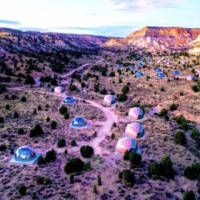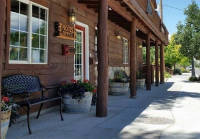Bryce Canyon National Park, despite its name, isn't a traditional canyon but a collection of stunning natural amphitheaters in southwestern Utah. Like nearby Arches National Park and Moab, Bryce Canyon is famed for its iconic red hoodoos – towering geological marvels sculpted by frost and erosion over time.
Sitting at a higher elevation than Zion National Park (between 8,000 and 9,000 feet), Bryce Canyon boasts a breathtaking winter wonderland. Imagine a mesmerizing tapestry woven with vibrant reds, verdant greens, and the pristine white of winter snow. Founded in 1928, Bryce Canyon National Park encompasses over 35,000 acres and shelters a diverse ecosystem. More than 400 native plant species thrive here, while various animals like bobcats, cougars, foxes, and even black bears call this park home. Elk and pronghorn antelope may occasionally grace visitors with their presence.
Similar to Arches National Park, Bryce Canyon offers unparalleled opportunities for astronomy enthusiasts. Gaze upon a dazzling display of stars thanks to the minimal light pollution. Explore the park along the scenic drive, conquer one of the eight designated hiking trails, or embark on a winter wonderland adventure with snowshoe hikes.
While its location might be slightly more remote compared to neighboring parks, Bryce Canyon National Park offers a variety of comfortable lodging options for visitors.
So, for an experience unlike any other, Bryce Canyon National Park awaits. Come explore its hoodoos, delve into its diverse ecosystem, and be captivated by the magic of its starry night skies.



 2416 reviews
2416 reviews

 116 reviews
116 reviews




 7855 reviews
7855 reviews

 41 reviews
41 reviews


 1543 reviews
1543 reviews






